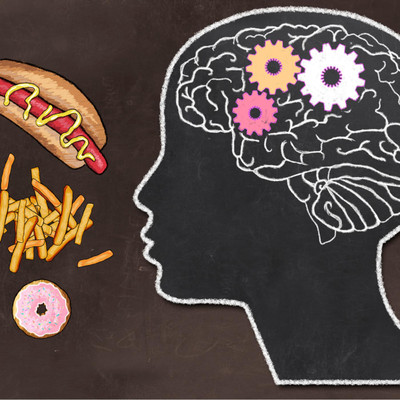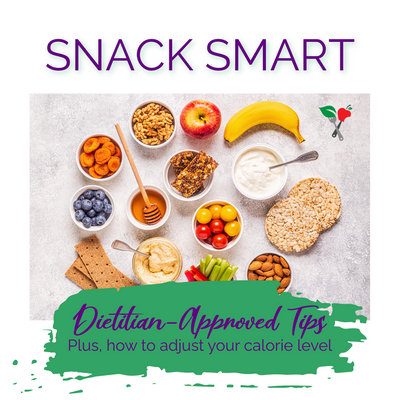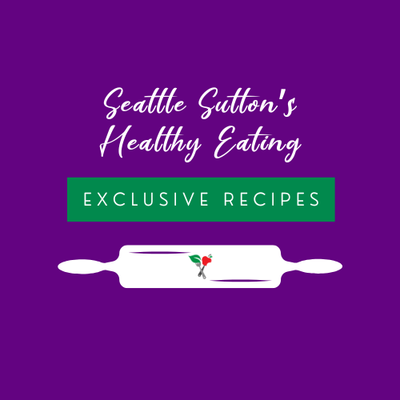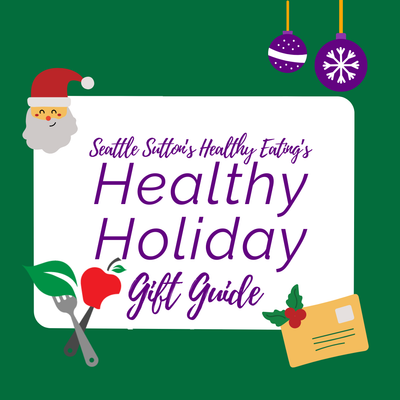Game Plan for Dealing with Eating Triggers
In an ideal world we would eat when we are hungry and stop when we are full, but for most of us there are many additional reasons why we eat. Many of us start to get influenced by outside sources when we are children. At this time our eating starts to get directed by external reasons rather than our internal cues. It is not uncommon for people to eat because of the time on the clock, because others are eating around them, because they are stressed, and the list can go on and on. When you are trying to eat healthy, eating triggers can be one of the biggest difficulties for staying on track. Below are 5 common eating triggers and a play-by-play for how to avoid them.
1. Physical - Physical triggers can be some of the trickiest to deal with. Physical triggers would be the candy dish on a coworker’s desk, the plate of cookies you baked sitting on the counter, or the extra large portion you were served at the restaurant. Research shows that the availability of food and placement of food impacts our eating. If food is convenient and available, it is more likely to be consumed. Large portions may also be a physical trigger.
Game plan: Dealing with physical triggers can be hard because most of the time they are out of our control. Some strategies you can try include placing healthy foods in visible locations and placing treats in a location that will not be so convenient. For example, leave a bowl of fruit on the counter and place the cookies on the top shelf of the cabinet. In the case of treats on a coworker’s desk, try to avoid walking by their desk, buy them a candy that you don’t like, or ask them if they could move them to a different spot. When served large portions, try boxing up half of the meal, share with a friend, or ask if you can get it as a side dish rather than a main dish.
2. Emotional - Emotional triggers include boredom, stress, sadness, loneliness, even happiness. Emotional eating is defined by consuming large quantities of food – usually “comfort” or junk foods – in response to feelings instead of hunger. It is estimated that about 75% of overeating is caused by emotions. Emotional eating can be difficult to identify, using a food log can be helpful in identifying emotional eating.
Game plan: The first step for dealing with emotional eating is identifying it. When hunger strikes and you are unsure if it is emotional or physical hunger, ask yourself these 3 questions: Am I really hungry? Do I feel hungry in my stomach? Does it make sense that I am hungry? If you identify that you are really not hungry, give yourself 10-20 minutes to get engaged in another activity. Oftentimes with emotional eating distraction is the best tool for working through it. Go for a walk, call a friend, take a shower, or any other coping skill that works for you.
3. Hunger - We’ve all been there… you’ve waited too long to eat and while preparing a meal you can’t seem to keep your hands out of the bag of chips or you decide just to run through the drive thru. When we wait too long to eat we often get overly hungry and then end up making bad choices or eating too much.
Game plan: Staying on a regular schedule with meals and snacks is the best way to deal with the hunger trigger. Also, make sure your meals include a good amount of fiber and a balance of protein and healthy fats to help keep you feel full. When we enter a meal feeling hungry but not famished it is much easier to make healthy choices and deal with triggers to overeat.
4. Habit - Some things just seem to go together like PB&J or Danny and Sandy in Grease. We have these same associations with our eating. Going to the movies equals popcorn. Thanksgiving equals turkey and pie. For some people, lounging on the couch equals snacks. Eating out of habit instead of hunger is calories your body most likely doesn’t need.
Game plan: The same tactic I explained with emotional eating works here. First you need to identify it and then determine if you are really hungry. Breaking habits, as we all know, can be very difficult but being patient and having a plan is your best bet. Plan out some healthier snacks to have at that time. Try to find other things to do with your hands, such as doing a Sudoku puzzle, rather than reaching your spoon into the carton of ice cream. And if you must have a snack, ALWAYS S portion it out to a plate or bowl to avoid the mindless eating that comes along with eating out of a container.
5. Alcohol and Lack of Sleep - Two other triggers for eating include alcohol and lack of sleep. When we drink, we often let our guard down and this can impact our food choices and also increase our appetite. Lack of sleep is known to impact our hormones that control hunger and fullness leading to increased intake throughout the day. Sleep loss also can cause us to reach for more carbohydrate heavy meals or snacks for a quick burst of energy.
Game plan: Keep alcohol intake minimal. A moderate intake is considered 1 drink daily for women and 2 drinks per day for males. Prioritizing sleep is also crucial. Research shows that getting less than 7 hours of sleep a night is associated with overweight or obesity.
Eating triggers will always be a struggle when trying to stick to a healthy diet, but having a game plan and being prepared with ways to deal with them can help you reign victorious with your health goals.

Interested in eating healthy? Hungry for more?







 Weight Loss
Weight Loss Health & Wellness
Health & Wellness Diabetes
Diabetes Heart Health
Heart Health Motherhood & Family
Motherhood & Family Dietary Restriction
Dietary Restriction Other Health Conditions
Other Health Conditions About SSHE
About SSHE


